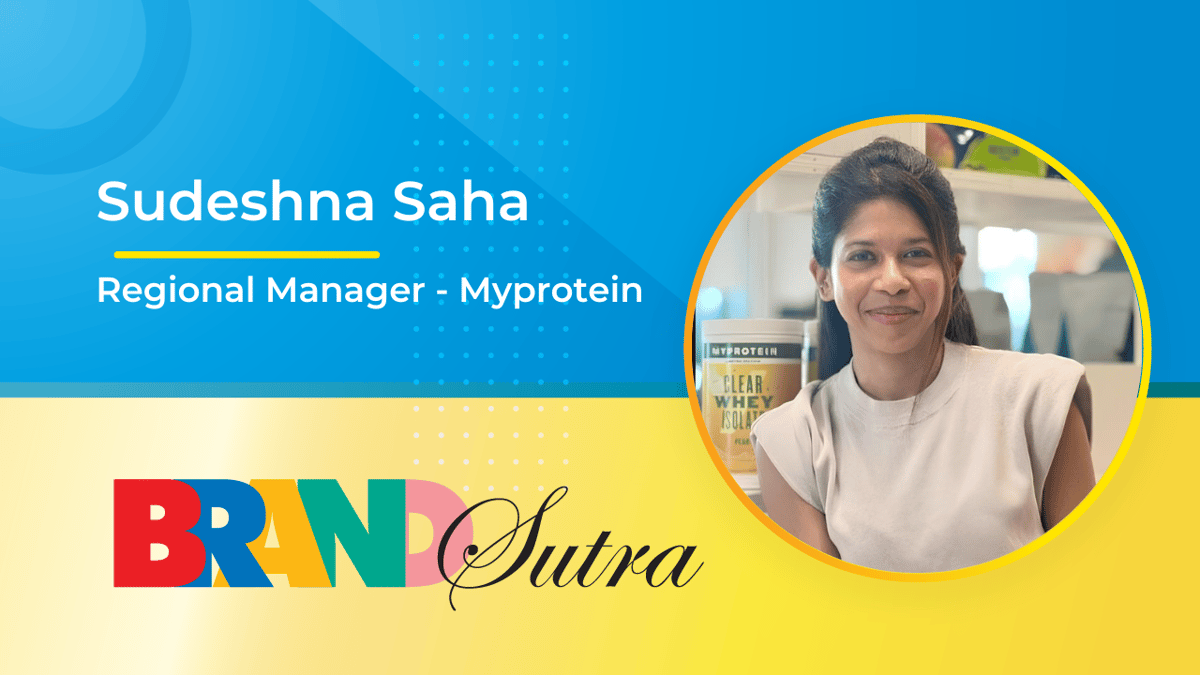The Hut Group (THG) got into the whey business and launched Myprotein two decades ago. Since originating in the UK, they’ve expanded their presence in nearly 40 countries. Years later, “the business is still growing and is even more exciting,” Sudeshna Saha, Regional Manager at Myprotein, tells us.
India’s sports nutrition market is broadly valued at around GBP 250 million, of which GBP 200 million is protein powders. Seeing potential in the country, the company has moved from a distributor-led model to bringing operations entirely in-house.
Their subsidiary, THG India, doesn’t just import products but has also started to manufacture in the country and address the growing demand. “Currently, Myprotein’s market share is around 7-8% in the sports nutrition space in India and we are looking at a market share of 15-20% by the end of next year.”
Gym Buffs To Everyday Actives
Right from the ages of 18 to 40, Saha tells us, people have varied consumption patterns. Among younger consumers are people working towards traditional bodybuilding and weightlifting championships, along with everyday active consumers who use whey as part of a healthy lifestyle and make sure their macros are addressed.
Traditionally, the male-female split used to be probably 80-20. Today, it’s almost 60-40 as women are gaining awareness of what’s good for their health. Coming to age, there used to be a myth that younger people shouldn’t take whey protein. But today around 15% to 19% of the customers are under 24. And there is a growing adoption of the whey protein from 17 to 21. People are also continuing their fitness well beyond their 30s. The brand sees a decent propagation – around 15% or so consuming protein in their late 30s and 40s.
Myth Busters
Of the various forms of protein, around 95% consumed is whey protein. Today, there is awareness that whey protein is not a steroid. Whey protein is produced from the remains of curdled milk. “But just like any food that we consume, consumers are right to be particular about the choices they make,” Sudeshna says, addressing adult protein powders that roam the market. “It is important to look for FSSAI approval on every product.” For whey protein, she advises that people look for third-party accreditations from vetted international bodies like Informed Choice and Labdoor that ensure there are no heavy metals or lead remains.
All core products like whey protein, whey isolates and clear whey carry certifications. In addition, to tackle the counterfeits that the brand often has to deal with, being one of the foremost brands in the industry, Myprotein has brought in an additional layer of authentication. This involves giving each product a unique ID and a QR code for consumers to scan where they can check the batch number and be assured of authenticity.
From E-Com To Everywhere
Traditionally, Myprotein has been an e-com-first brand because they wanted to ensure consumer trust in the product with no additional hands involved. But of late, with additional measures being taken for product authentication, in the last two to three years, they have ventured into the offline space. Beyond that, they are also embracing quick commerce to reach target consumers with more ease. “Taking our products in smaller package sizes through quick commerce and marketplaces like Amazon, Flipkart and HealthKart is one of our top priorities for the upcoming year.”
Saha agrees that the omni-channel growth will entail a lot of challenges with respect to product diversity but they’re working on counteracting that through making certain products exclusive online. “The brand is steering towards a 70-30 mix where 70% is online and 30% offline.” Currently, about 95% of their sales happen online in India.
Glocal Vision
Myprotein has been successful in marrying its global product innovation successes with local palates. Localisation is something their target consumers seek and it’s what the brand banks on as their regional growth strategy with flavours like Kesar Badam and Nimbu P..
The brand is focused on innovation and their latest product has been Clear Whey Isolate or a protein juice which is a light and refreshing alternative to a milky protein shake. And for Gen-Z, they’re looking at offering products at pocket-friendly rates. Another strategy that works for them is influencer marketing. “Getting subject matter experts to take the trust of the brand to the consumers is working well for us.”
The Whey Forward
One of their biggest bets is increasing their presence in offline marketplaces and building on point-of-sale marketing. They’re also going deeper into building trust with a project on transparency where customers will get to trace where the raw materials were procured and see them through different stages of manufacturing.
To provide for India’s growing market of fitness enthusiasts, they are building their catalogue and putting it at par with the global ones. In the US and UK, Myprotein has a massive catalogue that includes activewear. “The early adoption rates of Myprotein activewear even in India have been very exciting.”
And finally, creatine, that Saha dubs “an uncelebrated underdog.” The supplement is seeing large growth and acceptance as a must-have for not just competing bodybuilders but people with everyday active lifestyles. Saha tells us that the brand looks forward to marketing their range of creatine supplements in the country.
Myprotein is racing ahead into becoming a full-blown health and fitness brand in India where customers can shop not just for whey protein but also buy other supplements, vitamins, pre-workouts and activewear.

